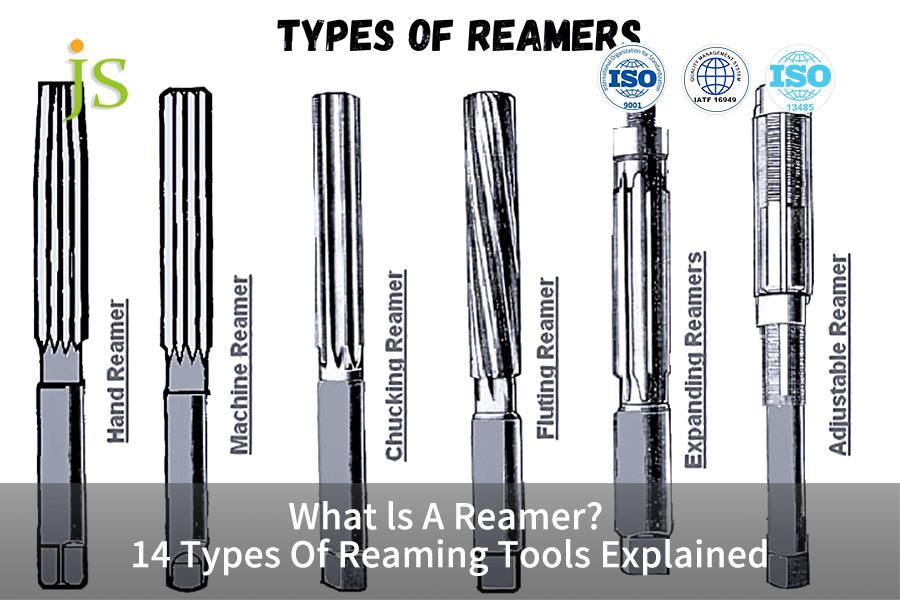Hand reamer is a key tool for achieving micrometer level precision in the field of precision machining.
In the field of precision machining, a difference of 0.01 mm is often the key to success or failure. Drills can make holes, but the hole walls left behind are usually not smooth enough and the size is difficult to control accurately.
The function of a reamer is to bridge this precision gap, and its multi blade design can accurately trim the hole wall, achieving a precision of up to 0.005 millimeters even with ordinary equipment or skilled manual operation.
It is like a master of refinement, capable of increasing the size and smoothness of holes to the micrometer level, especially suitable for CNC machining parts that have strict requirements for final fitting quality.
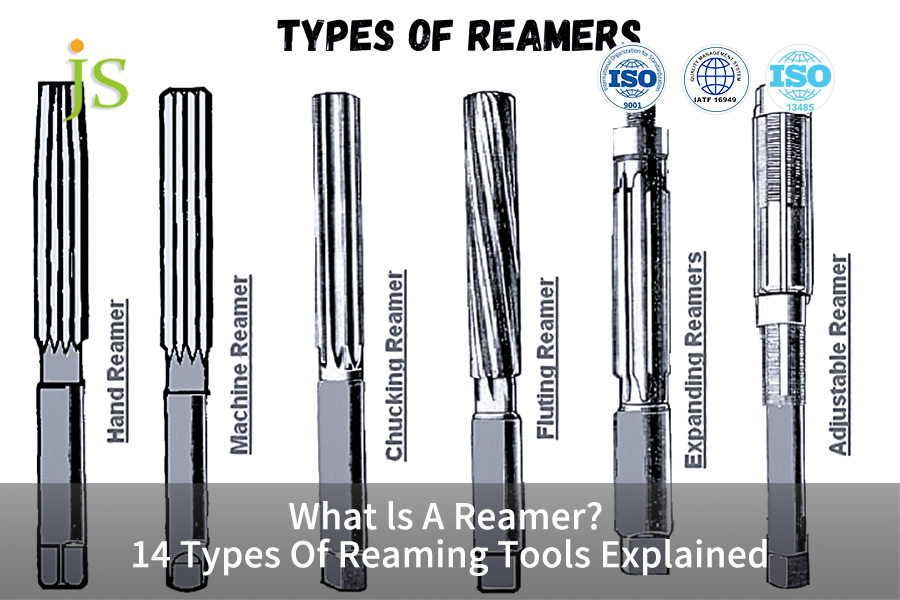
However, "reamer" is not a single tool,it is a large and diverse family of precision instruments.From the delicate hand reamer to the powerful machine model adapted to high-speed CNC, each is designed for a specific task.
In the following content, I will delve into the 14 most commonly used reamers in the field of mechanical processing. Before that, let's first understand the fundamental differences and then talk about which tool to choose.
| Attribute | Drill bit | Reamer |
| Main functions | Rough machining, quickly removing material to generate holes. | Precision machining, trimming existing holes. |
| Reachable tolerance | Loose (e.g.+/-0.1mm). | Extremely strict (e.g.+/-0.005mm). |
| Surface roughness (Ra) | Rough (Ra 3.2-6.3 µm). | Smooth (Ra 0.4-1.6 µm). |
| Typical applications | Create through holes, screw through holes, and guide holes. | Bore bearing holes, pin holes, and precision holes. |
| Tool design | Two main cutting edges (grooves). | Multiple cutting edges (4 to 12+grooves). |
Why Should You Trust This Guide? JS Precision's Hole Processing Practice
At JS Precision, we are not just a tool supplier, we are a partner in precision hole processing. When choosing a hand reamer, it is blind to just look at the size and material. The key is to understand how the blade shape(lead angle, land width, etc.) specifically affects the project at hand - accuracy, hole wall finish and efficiency.
Experience tells us that different materials require different reamers: hardened steel must be processed with a carbide tool with a negative rake angle to keep the blade strong and durable. For aviation aluminum alloys, it is necessary to use a tool with a spiral groove and front-end guide, which isthe kingly way to prevent shaking and improve surface quality.
"German cutting master Professor Fritz Klocke emphasized: Cutting tools are one of the decisive factors in the process chain."
Our every practice follows the detailed specifications in the ASME B94.2-2019 "Reamer" standard. We have processed micro holes for medical components that require mirror effect (Ra ≤ 0.2 μ m), and also solved the problem of locating pin holes for high-strength CNC machining parts on automotive steering knuckles. These holes are large in size, have strict positioning requirements, and need to withstand huge impact forces.
The success of these projects depends on our ability to help you choose the most suitable hand reamer from dozens of options based on specific materials, machine conditions, accuracy goals, and batch sizes.The goal is straightforward:To achieve micron-level accuracy while optimizing cost and tool life for each workpiece.
What Is Reaming In CNC machining?
Simply, reaming in CNC machining is to "finish" a hole:
The purpose is not to open a hole, but to "repair" the hole:
Reaming is not the process of drilling a hole. It is a key step to fine-tune the hole after we have already drilled (or bored it). Imagine that the hole wall may be a little rough or the size is not perfect after drilling.Reaming is to solve these problems.
What tool is used? Multi-edge reamer:
We use a tool called a "hand reamer". It looks a bit like a drill, but the key difference is that it has multiple (usually 4 or more) very precise straight edges (or with spiral edges). This tool does not rotate to make a hole, but is rotated into an existing hole.
What does it "repair" specifically? Three key points:
- More accurate dimensions:The diameter of a hole after drilling or rough boring will be slightly off. A reamer is like an accurate ruler and scraper, which will trim the diameter of the hole bit by bit to the very accurate final size required on our design drawings.Tolerances can be controlled very tightly.
- More regular shapes:When drilling, the hole is sometimes not so round (oval), or the hole is large at the top and small at the bottom (taper). The multiple blades of the reamer can evenly "scrape" the hole wall, correcting these irregular shapes and making the hole rounder and straighter.
- Smoother surface:The wall of the hole after drilling is usually rough. The fine blade of the reamer "scrapes" the hole wall very smooth and flat while trimming the size and shape. This not only looks good, but more importantly, it can reduce friction and increase the life of mating parts, such as when installing pins or shafts.
My experience:When we process a hole on CNC, if we have high requirements for its dimensional accuracy, roundness, straightness or inner wall finish, after drilling, we will almost certainly arrange a reaming process. It is like a "finisher" for hole processing, ensuring that the hole reaches the final perfect state.For customers seeking reliable precision hole machining supplier, mature application of reaming technology is a basic requirement.
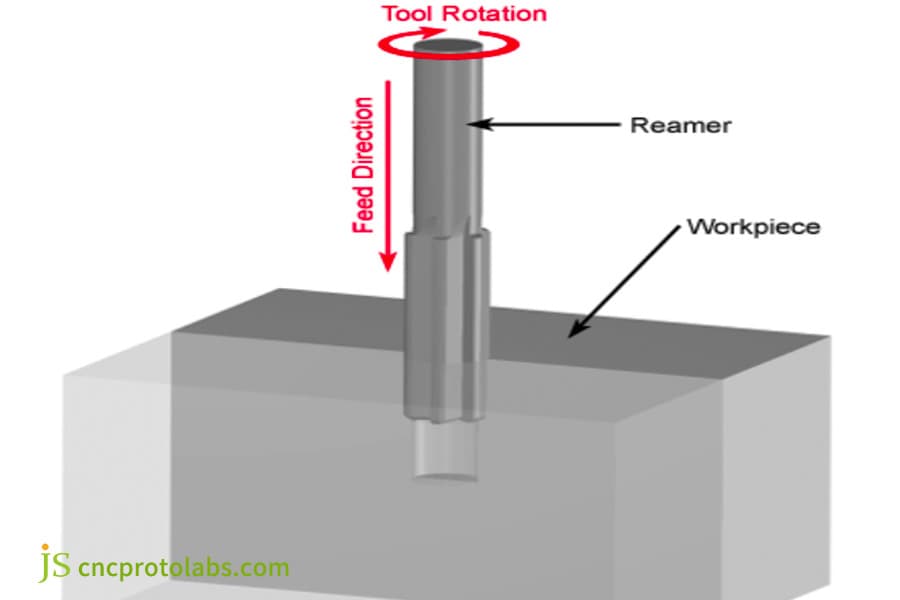
Figure 1:The knife rotates clockwise on the workpiece and feeds along the axial direction to complete the hole machining.
Hand Reamers: The Foundation Of Precision
Understanding the ability to manually use a reamer is fundamental when choosing custom CNC reaming services.
Speaking of hand reamer, although it is easy to operate, it is indispensable in some hole processing that pursues extreme accuracy or specific scenarios. Simply put, this is a reamer specially designed for manual operation, mainly divided into three types:
Straight-edge hand reamer:
- This is the type we use most,and the teeth are straight.
- It is to give the straight-walled round hole that has been drilled or rough-bored the final "beauty" and "size". Imagine that the hole may be a little rough or the size is a little off after drilling. Use it to ream it slowly by hand, and you can have a hole with super-precise size (tiny tolerance), smooth mirror-like wall of the hole, and neat and round. It is especially suitable for small batch, high-precision work, or places that CNC machines cannot reach.
Taper hand reamer:
- You can tell from the appearance that the entire blade is tapered.
- Its specialty is machining or finishing tapered holes. The most common use is to ream holes that fit taper pins (such as Morse taper pins and metric taper pins). When you need a perfect taper fit, you have to rely on it to manually ream it out bit by bit to ensure that the taper fits perfectly.
Expandable hand reamer:
This reamer is very clever, with a slot on the blade body and an adjustment screw at the end.
Turn the screw and the diameter of the blade body can be slightly increased.This feature makes it particularly useful:
- Fine-tuning the size:It comes in handy when you need to make a hole slightly larger than the standard reamer size, or want to get a very specific, non-standard fit clearance.
- Repairing old holes:Is the hole a little worn, enlarged, or out of round after a long time? Use it simply to enlarge and ream the hole a little bit, and you can restore the hole size and shape and extend the life of the part.Flexibility is its biggest advantage.
Hand reamer processing performance reference:
| Key parameter | Typical values/ranges | Describe | Source reference |
| Recommended machining allowance (diameter) | 0.05 - 0.20 mm (0.002" - 0.008") | Excessive allowance can easily cause the reamer to become stuck, the blade to break, or the hole quality to be poor. The upper limit of cast iron/aluminum alloy can be relaxed to 0.25mm. | ISO 240 (Guidelines for Tool Applications). |
| Can achieve surface roughness (Ra) | 0.4 - 1.6 μm | Depends on materials, lubrication, and operating techniques. Approaching grinding effect with proficient operation. | ASME B46.1 (Surface Texture Standard). |
| Dimensional accuracy capability (IT level) | IT7 - IT8 | For example, a hole with a nominal diameter of Ø 10mm can have a tolerance of ± 0.015mm (approximately ± 0.0006 "). | ISO 286 (Tolerance and Fit). |
| Common taper standard angle | Mohs taper (~1:20), metric taper (1:20, 1:30, 1:50) | The taper reamer must strictly match the required standard taper. | DIN 228 (taper pin and taper hole). |
| Handle tolerance (h-level) | h6 | Ensure that the reamer handle does not shake in the wrench or hinge bar, and the torque transmission is stable. | ISO 286 (Tolerance and Fit). |
In summary, hand reamer, especially the flexible and reliable expandable type, is indispensable in high-precision repair, taper hole making and on-site repair. Want to ensure that your key hole position achieves ideal accuracy and fit? Contact JS technical team at any time, obtain customized solutions for your precision hole machining supplier needs.
Machine Reamers: King Of Production
Combined with my daily workshop experience, let me talk about machine reamer,the "main force of hole processing":
Chucking reamer:
This is the most commonly used and most convenient one on our lathes,milling machines and drilling machines. It has a simple structure and can be directly clamped on the tool handle like a drill bit. It is very versatile and well-suited to most general hole finishing uses.
Shell reamer:
When dealing with large holes, its economy is reflected. It is a "two-piece set": a tool sleeve responsible for cutting and a supporting tool bar. If the tool sleeve is blunt or broken, just replace it, and the tool bar can be used repeatedly. This can save a lot of costs when processing large holes in large quantities.
Carbide reamer:
When encountering difficult-to-process materials, such as stainless steel, hardened steel and other hard and tool-consuming materials, or when the factory needs to run at full capacity for large-scale production, carbide blades are our first choice.It is much more wear-resistant than ordinary high-speed steel reamers,has a longer life and high processing efficiency, and is a key tool to ensure the stability of large-volume orders and hole quality in custom cnc reaming services.
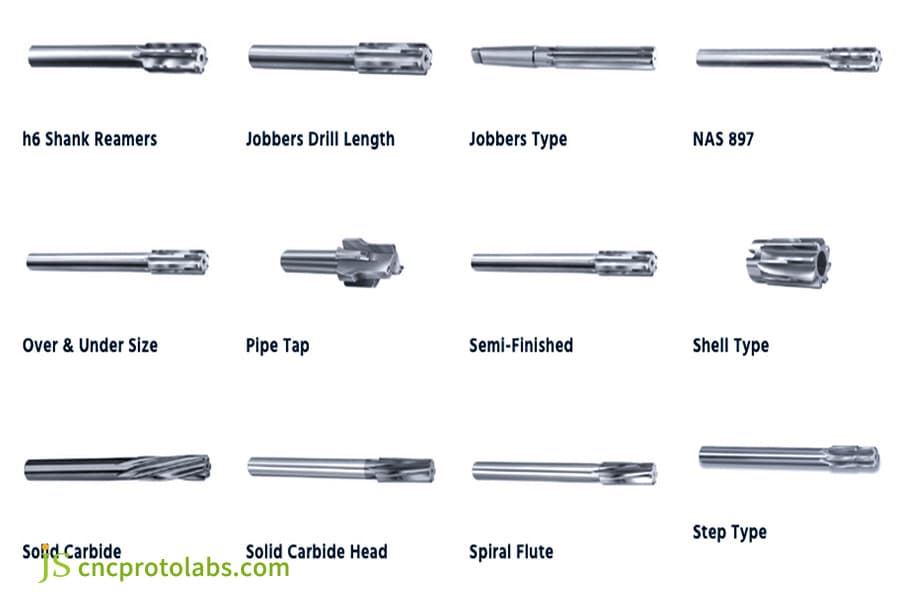
Figure 2:Multiple types and specifications of reamers, including solid hard alloys, spiral grooves, and other designs.
Taper And Special Reamers: Coping With Complex Working Conditions
As an engineer who often deals with holes in JS Precision, let me talk about several"special forces" reamers that solve special hole processing needs.
Taper pin reamer:
When the drawing requires a standard taper pin hole (such as a 1:50 taper), it must be used. It is specifically used for this purpose, and the processed taper hole can perfectly match the taper pin to ensure a firm and reliable connection.
Morse Taper reamer:
The Morse taper hole in the machine tool spindle or tailstock has been used for a long time or is newly made and needs to be refined? This is a special tool. It can accurately trim or clean the Morse taper hole, ensuring that the tool or the center is installed straight and stable, and the torque is transmitted without slipping.
Duplex reamer:
When you need to get two concentric step holes of different diameters at one time, the duplex reamer is an efficient tool. It is like a "step drill" that can complete the processing of two sizes of holes in one cut, saving tool change time and excellent position accuracy. This can save a lot of trouble for some compact and high-demand CNC machining parts.
Process optimization consultation: Book our free DFM analysis and our experts will help you optimize the design and reduce the cnc reaming services cost.
More Advanced Reaming Tools
We often encounter extreme challenges in precision hole processing.Here are some of our commonly used "weapons":
Adjustable reamer:
This is very practical! Its blade can fine-tune the position in the tapered groove to cover a small range of sizes. When the customer's drawing requires several holes of very close sizes, or fine-tuning is required to compensate for wear, it can be used to save time for frequent tool changes, especially in trial production or small batches.
Floating reamer:
This design is very smart. Its tool holder allows the tool head itself to have a small "movement margin". In this way, even if the machine tool spindle and the center of the hole to be processed are slightly misaligned, the reamer can "align" itself and automatically align to the center of the hole. The result is that the roundness and straightness of the reamed hole are particularly good, and the concentricity is extremely high, which perfectly solves the coaxiality problem that makes people headache. According to actual measurements, the stability improvement is very obvious.
Drilling and reaming compound tool:
- Good news for mass production of fixed-specification workpieces! It combines the two processes of drilling and reaming into one tool, which can be completed in one pass, and the hole is reamed immediately after drilling. The efficiency improvement is not a little bit, especially suitable for those processing projects with strict requirements and large quantities.
- Imagine that when a customer places an urgent order using our custom cnc reaming services, this tool can help us deliver high-precision holes faster, with a very fast delivery speed.
Reamers In Dentistry: An Amazing Cross-Border Application
When I see the term "dental reamer", I must say that this is a great example of how the principles of precision machining are everywhere! Let me break it down:
Root canal file/reamer (dentist's "precision reamer"):
It is the workhorse in root canal treatment. Think about it, dentists have to work in the tiny root canal inside the tooth. What it does is exactly the same as when we use industrial reamers to expand and shape holes in metal: they all follow an existing small channel (the hole) and clean it very accurately, trim it to a specific shape and size so that the subsequent filling material can fit perfectly. In essence, they are all precise control of the "hole".
Bone reamer (to "finely refine the hole position" for implants):
In orthopedic surgery, such as installing artificial joints (hip joints, knee joints), doctors need to "open a socket" in the bone to place the implant. Bone reamer is for this delicate job.
Its core requirements are highly consistent with the hole positions of our high-precision CNC machining parts: The bone cavity must be reamed out with extremely precise dimensions. Only in this way can the metal or ceramic implant be placed in it to achieve the ideal "press fit" effect with the bone, which is both stable and not loose, and allows the bone to grow in slowly in the future. A little difference may affect the effect of the operation.
Whether your application scenario is a factory or a hospital, as long as it involves precision hole processing needs, JS Precision can provide reliable solutions. Please inform us of your production plan, and we will reserve production capacity for you to ensure timely delivery of CNC machining parts.
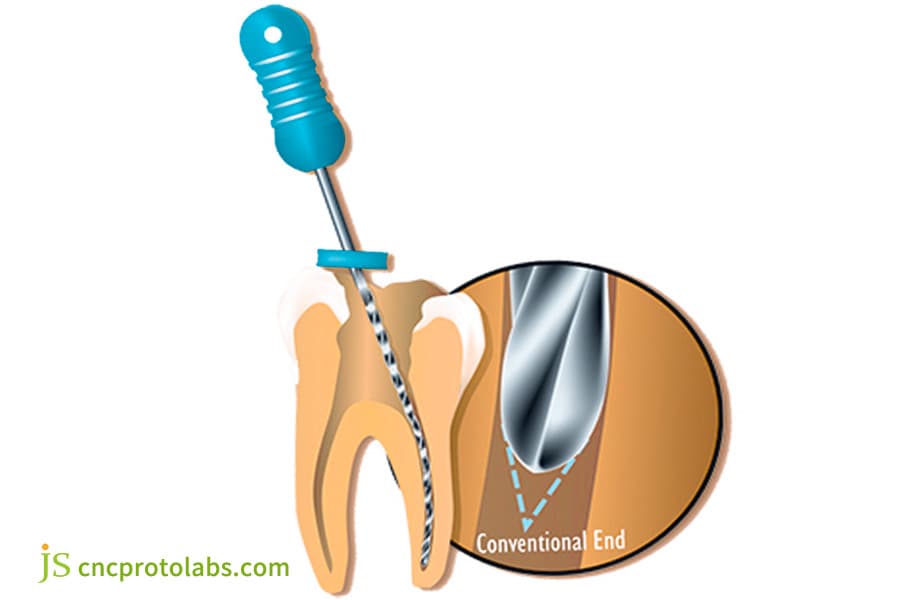
Figure 3:Dental root canal files are being used to treat teeth, and close-up shots showcase their traditional designed working tips.
Case Analysis: Flawless Hole Processing Of Aerospace Components
Let me disassemble a hardcore case: How did our team handle the abnormally precise holes in satellite key parts?
Challenge: Zero-tolerance rotation sensor mounting holes
- A satellite customer came in and needed an aluminum housing to be processed to fit into a high-speed rotation sensor.
- The crux of the problem is the sensor mounting hole: Ø15mm H7 tolerance (e.g, it must only be between 0 to 0.018mm larger than 15mm) is required so that the sensor can be pressed firmly into position (interference fit) and to account for any looseness that will cause vibration.
JS Precision's solution: Accuracy comes from steps and equipment
(1) DFM analysis prior:
We received the drawings, and our engineering staff sat down and made it clear: Drilling straight ahead with a drill? No! The drill cannot provide such tight dimensional tolerance, and the surface won't cut it. It will definitely be scrapped if it is hard-drilled.
(2) Precision process planning:On the 5 axis CNC, we have established a "three-step" program:
- Step 1: Drilling- Drill a Ø14.85mm hole first, leaving space to finish.
- Step 2: Fine boring and shaping- Exchange the fine boring tool to open up the hole to Ø14.98mm. The critical aspect of this step is that the straightness of the hole (if the hole wall is straight) should be perfect, giving a good foundation for the last step.
- Step 3: Ream the hole to make a difference- This is the finishing touch! Use a carbide replaceable blade reamer, closely control the speed and rate of feed, and slowly ream the hole to the final dimension, snugly withinthe tight H7 tolerance range of Ø15.000mm to Ø15.018mm.
Why is the reamer the ultimate answer?
The following table illustrates comparison of mean hole quality achievable by different finishing operations on similar aviation aluminum alloy parts:
| Processing | Stable achievable tolerance level (ISO) | Typical surface roughness (Ra) | Geometric accuracy of holes | Suitable for batch production |
| Precision reaming | H7 (and above) | < 0.4 μm | Extremely Excellent | Small and medium-sized batches |
| Fine boring | H8 - H7 | 0.8 - 1.6 μm | Excellent | Flexible |
| Fine grinding | H6 - H5 | < 0.2 μm | Extremely Excellent | Large scale production |
| High speed milling | H8 - H7 | 0.8 - 1.6 μm | Good | Flexible |
Data is integrated from AS9100 certified supplier practices and NASA technical memorandum.
Results and value:
- All delivered parts are strictly inspected by three-coordinate measuring machine (CMM) and 100% qualified!
- The customer successfully avoided the problem of sensor looseness or vibration during assembly, which can be catastrophic on satellites.
Although the pursuit of such aerospace-grade precision will be reflected in the cnc reaming services cost, customers know clearly that reliability is priceless. Success once is much cheaper than rework or failure. This is the core value of our custom cnc reaming services, providing guaranteed accuracy for critical applications.
Precision hole machining is the lifeblood of aerospace. From rigorous DFM to optimal process selection, JS Precision ensures that your critical parts meet the standards once. Don't compromise on accuracy anymore, contact JS Precision engineers immediately, and experience custom CNC streaming services that comply with AS9100 standards.
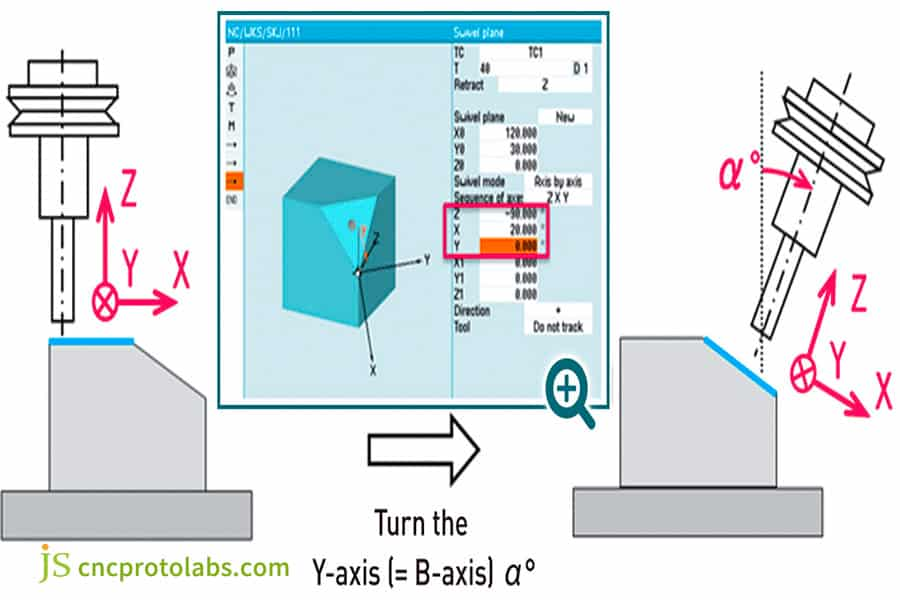
Figure 4:The control system sets the deflection angle of the reamer around the Y-axis (B-axis) to achieve precision machining of inclined holes.
Beyond Reamer: Comprehensive Precision Machining Services
Knowing tools ≠ knowing your machining:
You may know more than a dozen types of reamers, such as those we talked about earlier, but the key is: for the specific part in your hand, what material, what working conditions it will withstand, where it will be used in the end, which reamer should you choose? What speed, feed, and cooling should be used?If these parameters are slightly different, the results may be very different.
This is the value of JS Precision:
We are not just machine tools. The core is the process knowledge base and engineering experience. From the most suitable reaming and fine boring strategies to complex multi-axis milling,precision turning, and necessary surface treatment, we provide a complete set of truly knowledgeable manufacturing solutions. You only need to focus on the design goals, and let us solve the machining problems.
FAQ
Q1: What is the main difference between reaming and boring?
Bothreaming and boring are used to finish holes,but the methods are different.
- Reaming is like using a precision "shaping knife" of fixed size. The main purpose is to quickly and stably repair the hole to the standard size of the knife itself, and the surface is smoother.
- Boring is more like using a flexible "single-point knife" to enlarge the hole little by little to the precise size you want,especially suitable for non-standard size or oversized holes.
Simply put: if you want standard size, fast and good, reaming is the first choice. If you want flexible custom size, boring is better.
Q2: Can I use a hand reamer on an electric drill?
- Absolutely not!Hand reamer is designed for low-speed and uniform rotation by hand. Electric drills have high speed, strong force, and easy to shake. Forcible use will inevitably lead to violent vibration of the knife.
- Scratching the hole wall/rough surface is a minor problem. In severe cases, the reamer will be directly damaged by the chipping blade and the hole will be useless. If you want precision, just use the reamer lever to operate manually, or choose a special machine reamer.Don't save this step,the cost is even greater!
Q3: Why is the hole size I reamed too large?
Our on-site analysis often finds these points: the reamer is blunt, the speed is too high, or the pre-drilled hole has too little margin. These are all due to poor process control.Want to hold the tolerance firmly? The tool state, cutting parameters, and margin design must all be accurately matched,which is exactly what JS Precision deals with every day.
Q4: What materials are reamers usually made of?
When we make reamers,the most common one is high-speed steel (HSS), which is versatile and affordable. But if you want better performance, make the tool more durable, or often have to deal with hard materials, you have to choose carbide. This type is either made of a whole piece of carbide or a carbide blade is welded on the tool body. Both of these can handle harder work and have a longer life.
Q5: What is the minimum order quantity (MOQ) for JS Precision?
We provide highly flexible services with a MOQ of 1 piece. We welcome both prototype testing and mass production. We believe that winning your long-term trust with first piece quality is more important than any quantity threshold.
Q6: What is the typical delivery time for precision reaming services?
For conventional precision reaming projects, the typical delivery time is 3-5 working days. If the project is urgent, we provide expedited services to shorten the lead time. Upload the drawings to obtain accurate delivery dates.
Q7: How does JS Precision ensure the security of my design drawings and IP?
Your IP security is our lifeline. We manage through the ISO 9001:2015 certification system, sign strict NDA (Confidentiality Agreement) with all clients, and use encrypted servers and permission management to ensure 100% confidentiality of your design.
Q8: Does the quotation include DFM (Design for Manufacturability) analysis?
Yes, every CNC reaming quote includes free and professional DFM analysis. Our engineers will review your drawings and provide detailed recommendations on manufacturability, cost optimization, and precision assurance to ensure the success of the project in one go.
Summary
These 14 types of reamers, from types that require manual fine operation to carbide types that are precisely controlled by CNC machine tools, are our core tools for high-precision hole processing. They silently support critical applications, ensuring reliable operation of engines, safe flight of aircraft, and tight fit of medical implants.
JS Precision's advice:
- Leave the problem to us:If you are always worried about the processing size not meeting the standard, or you are undecided about the process and tool selection, don't worry. JS's team of precision machining experts specializes in solving such challenges.
- Quickly get solutions and prices:Just upload your CAD drawings to our secure online platform. You will get transparent CNC reaming quote immediately and get a detailed manufacturing feasibility study (DFM) for free.
Expert control, precise matching:Our engineers will carefully evaluate your needs to ensure that the best processing method and the most suitable reamer are recommended for your project. We are here, ready to help you turn your design into a high-quality finished product.
Disclaimer
The contents of this page are for informational purposes only.JS Precision Services,there are no representations or warranties, express or implied, as to the accuracy, completeness or validity of the information. It should not be inferred that a third-party supplier or manufacturer will provide performance parameters, geometric tolerances, specific design characteristics, material quality and type or workmanship through the JS Precision Network. It's the buyer's responsibility Require parts quotation Identify specific requirements for these sections.Please contact us for more information.
JS Precision Team
JS Precision is an industry-leading company, focus on custom manufacturing solutions. We have over 20 years of experience with over 5,000 customers, and we focus on high precisionCNC machining,Sheet metal manufacturing,3D printing,Injection molding,Metal stamping,and other one-stop manufacturing services.
Our factory is equipped with over 100 state-of-the-art 5-axis machining centers, ISO 9001:2015 certified. We provide fast, efficient and high-quality manufacturing solutions to customers in more than 150 countries around the world. Whether it is small volume production or large-scale customization, we can meet your needs with the fastest delivery within 24 hours. Choose JS Precision this means selection efficiency, quality and professionalism.
To learn more, visit our website:www.cncprotolabs.com
Resource


